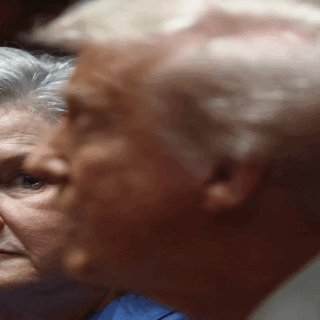
How did you decide to become a historian? What attracted you the most?
My interest in Russian history began when I was 14 years old and saw the Hollywood movie Anastasia starring Ingrid Bergman as a pretender to the throne. I went on to read books about tsars and Cossacks during that time.
I started studying Russian history as an undergraduate and went on to do a graduate degree. As an undergraduate, I was intrigued by the history of the populists (narodniki) of the 1870s and the Narodnaya Volya (the People’s Will), the organization that assassinated Tsar Alexander II in 1881. Of course, I learned Russian to read scholarly works. I wrote my master’s thesis on the court reform of 1864 and political trials from 1864-1894.
However, I worked as a journalist for six years and as a librarian for more than 20 years. I did not see the possibility of going for my doctorate and teaching in a university.
But, Facebook introduced me to Russian colleagues who invited me to speak online at conferences and to write articles for Russian academic journals. This started in 2016 and I have published more than 20 academic articles. So much material is now available to specialists in Russian historians and I like interacting with my Russian colleagues. I am able to address controversial topics such as political terrorism in the Russian Empire and bring a fresh outward perspective to the topics. This experience helped me decide to become a full-time historian after retirement.
My articles are about political terrorism, the Black Hundreds, eschatology, comparing the Russian Revolutions of 1905-1907 and 1917-1921 to European revolutions. All of my articles set the Russian theme in the European historical context. I always use a comparative approach. This appeals to Russian readers. The topics of my articles all have a huge relevance for today.
I retired in 2021 and am now a full-time historian!
You write a large tome about the rise of terrorism, about the Black Hundreds and eschatology. What drew you to this topic? How are these topics related?
I am writing a book in Russian for publication in Russia about political terrorism in the Russian Empire from 1866-1911. The subject is extremely complex because the book involves more than just listing dates and facts. Analysis of the whole phenomenon of terrorism in the Russian Empire is most important. I need to explain why terrorism took on such mass proportions in Russia. Between 1901-1911, left wing terrorists killed or wounded about 17,000 people. Between 1866 and 1900, there were about 100 deaths caused by terrorism, including the assassination of Tsar Aleksandr II in 1881.
The first wave of terrorism between 1878-1894 was dominated by the Narodnaya Volya—People’s Will. The second wave between 1901-1911 had a very crowded playing field of participants. Terrorism was used by the Socialists-Revolutionaries (direct descendants of the Narodnaya Volya), Social Democrats—both Bolsheviks and Mensheviks, national minority parties of Marxist and populist tendencies, anarchists of all tendencies, unaffiliated leftist marginal groups. A few terrorist acts were committed by Black Hundred fighting squads.
I first became interested in the topic when I wrote my master’s thesis on political trials in Russia between 1866 and 1894. Many of the trials involved terrorists who belonged to Narodnaya Volya (The People’s Will). Years later I went on to study terrorism in the 20th century especially during the Revolution of 1905-1907.
I have to set the history of Russian terrorism within the context of the history of terrorism in Europe. This comparative approach allows me to determine how the Russian situation had elements of uniqueness.
Political terrorism in Russia was a derivative of the strained relationships between government and society. This requires looking at how terrorism expressed this strained relationship.
This also means how both supporters and opponents of terrorism, especially in the political parties and movements, expressed themselves. As the largest anti-revolutionary movement in Russia, the Black Hundreds must be studied.
What happened was that both members of the government and oppositional and revolutionary movements all discovered that terrorism was useful in advancing and obtaining their political goals. In this sense, terrorism became self-perpetuating.
For members of the government, dealing with terrorism meant either enacting reforms to remove the causes of terrorism or pursuing repressive policies to crush all opposition. Socialists and anarchists regarded terrorism as a means of overthrowing the government. Liberals supported terrorism because it could put pressure on the government to grant a constitution. Conservatives often withheld their support from the government because they were alienated by the government’s mistrust of all public initiative, including from loyalist elements.
Eschatology is the teaching about the coming end of the world and the building of a new world. Eschatology shaped much of the mindset of terrorists—a longing for the destruction of the old world, seeing themselves as being in a struggle between the forces of good and evil.
My book is dealing with the birth of mass terrorism in the 20th century.
You are the heir of an Italian anti-fascist. Please tell us about your father and his fight against fascism.
This subject is too personal and I do not want to discuss here. One thing I learned from my father was to respect people and not to pay attention to their racial, ethnic or religious origin.
Is there a danger of fascism today?
No. Fascism, National Socialism and related ideologies emerged in very different conditions in the 1920s and 1930s. These ideologies were discredited by the enormity of Nazi war crimes. There are groups considered Neo-Nazi and Neo-Fascist today but they have had to adapt themselves to changing conditions especially since many people, especially in Europe, have painful memories about Nazism and Fascism and the war crimes committed by Nazis and Fascists. .
The real danger not just in Europe but elsewhere in the world are mass far-right populist parties and movements. They profess their hatreds of the elites of big government, big business and big labor unions and claim that they speak for the people. Far-right populism appeals to angry and disenchanted people who have lost faith in traditional politics parties from right to left. It often attracts people who would have belonged to Nazi, Fascist and related movements in the past.
What are the Black Hundreds and why was their movement popular at the beginning of the 20th century? Do they differ from the Nazis, and if so, in what way?
The Black Hundreds were a mass far-right populist movement originating in the 1905 revolution. The Black Hundreds numbered more than 400,000 members by 1907 easily making the biggest far-right movement in Europe and the biggest legal political movement in Russia. They included parties and movements such as the Union of the Russian People, the Russian Assembly, the Union of the Russian People in the name of the Archangel Michael.
Historians have traditionally condemned the Black Hundreds as ultra-reactionaries but certain popular writers in Russia today praise them as “true-Russian people”.
The Black Hundreds in a way constituted a revolution from the right. They advocated unlimited rule by the tsar (autocracy), but they chose to participate in the State Duma. Black Hundreds basically opposed both the establishment of the government bureaucracy and the counter-establishment of the liberal and socialist intelligentsia. The Black Hundreds movement divided the non-Russian nationalities into “nations friendly to Russia” and “nations hostile to Russia”. They regarded Jews as the worst enemies of the Russian people.
However, the Black Hundreds had a complex understanding of just what the Russian nation was. They included in the ranks of the Russian nation anybody who supported the triple formula of Orthodoxy, Autocracy and Nationality (National Spirit). This was more of a political definition of the Russian people than an ethnic definition. So the Black Hundreds could include in the ranks of the Russian nation non-Russians who supported Orthodoxy, Autocracy and Nationality and exclude many Russians, especially liberals and socialists, from the ranks of the Russian nation. By the way, the Black Hundreds were following common European practice in defining who could be included in a political nation and who would be excluded.
The Black Hundreds included people of both genders, all classes, many nationalities and religions. The ideology was extremely amorphous and vague and appealed to people who were angry at those who supposedly gained the most from revolutionary trouble. The history of Russia from 1861-1917 is the history of the transition from feudalism and capitalism. This transition caused conflicts in all European conflicts. The emergence of the Black Hundreds was one chapter in a common European phenomenon.
Some historians have regarded the Black Hundreds movement as an early form of Nazism or Fascism, but this is not true. Nazis and Fascists had a vision of the nation being reborn through contemporary chaos. Black Hundreds did not have this vision. They could complain about decline and degeneration of the Russian nation, but they had no vision of the future.
Please tell us about Narodnaya Volya and their attitude towards terrorism.
Narodnaya Volya (The People’s Will) was the terrorist organization that killed Tsar Aleksandr II on March 1, 1881. The organization was formed in 1879 and most members of the Executive Committee were arrested by early 1883. However, right up to 1894, most revolutionaries in Russia considered themselves narodovol’tsy and made repeated unsuccessful to re-establish Narodnaya Volya.
The Executive Committee stated that it considered terrorism only one means of overthrowing the government and carrying out a political and social revolution. However, the assassination of the tsar absorbed the organization’s financial and human resources.
The Narodovol’cy organized many satellite organizations among students, workers, army and navy officers, liberals, local groups, and the non-Russian minorities.
The reason why Narodnaya Volya chose terrorism and specifically the assassination of the tsar (tsareubiistvo) came from their understanding of the Russian state. The Narodnovol’tsy believed that unlike Europe, where society had created the state, the Russian state had created society. Because power was concentrated in the hands of the tsar, narodovol’tsy believed that assassination of the tsar would result in the collapse of the political and social order.
The Narodovol’tsy were correct in their understanding of the nature of the Russian state. The abdication of Tsar Nicholas II in 1917 led to the collapse of the Russian state and society between the February and October revolutions in 1917. The Narodovol’tsy simply chose the wrong method in ending the old system.
Historians often think that the assassination failed to overthrow the system. Actually March 1 1881 was a victory for Narodnaya Volya. One of the implicit goals of Russian terrorism was to use terrorism as a pre-emptive strike to prevent Russia from becoming a European liberal, constitutional bourgeois state.
Just before his assassination, Aleksandr II approved a reform that would allow representatives of the zemstvo—local councils—to take part in discussions on proposed legislation at the State Council. This reform eventually could have led to a constitution and parliament.
Instead, after the assassination, Tsar Aleksandr III rejected this reform. The Narodnaya Volya managed to delay Russia’s constitutional development by 25 years.
Another implicit goal of Russian terrorism was to provoke the government into using more repressive measures in the hope that this would ignite a popular revolution. After the assassination of March 1, 1881, the government adopted extraordinary security legislation which stayed in force until 1917.
So the Narodovol’tsy failed in overthrowing the government and starting a revolution. But they scored major victories in provoking the government to become more repressive and in delaying the country’s revolutionary development.
Following generations of revolutionaries believed that Narodnaya Volya had come closest than any other organization in shaking the foundations of the government. Consequently, rejecting narodovol’tsy methods was unthinkable for Russia’s next generation of terrorists.
Studying all these directions, which personality is the most interesting for you?
Narodnaya Volya occupies a virtually honorable position in the history of world terrorism. Even historians who usually condemn terrorism will make an exception for the narodovol’tsy. This is part of how the Narodnaya Volya projected an image of itself as martyrs engaging in single combat with the Russian government. The members of the Executive Committee included both men and women and many of them had intense romances. Andrei Zhelyabov, a former serf, and Sofiya Perovskaya, the daughter of a government minister, are often considered the Romeo and Juliette of the Russian revolutionary movement.
The Narodovol’tsy are highly appealing individuals and it is difficult to be objective about them compared to other terrorist movements in Russian, European and world terrorism. However, Narodnaya Volya had its dark side and the Executive Committee often engaged in deceit and mystification in dealing with all outsiders including fellow revolutionaries.
It is interesting to note that Narodnaya Volya has become the subject of many novels written by Russian, Soviet and foreign authors. No other terrorist movement in history has enchanted so many authors and readers of novels.
When studying them, do you feel more understanding or rejection?
When studying how the government and the political parties and movements of society related to terrorism, you can understand their reasons. However, it is somewhat horrifying that government and educated society in pre-1917 Russia regarded terrorism as a legitimate means of advancing and obtaining their political goals. This means that thousands of people approved a form of political struggle that crossed all traditional legal, moral, and religious boundaries against killing. This mentality spread to European countries when World War One started.
What, in your opinion, are the roots of modern terrorism?
Although we have had politically-motivated murders since ancient times, terrorism is a fairly recent phenomenon. The ideology and organizational structure of terrorism begins in the19th century in Europe and takes on more frequency in the late 19th century. Terrorists at all times have generally claimed that they were forced to use violence because governments and societies did not allow legal means for obtaining their goals. This claim is nonsense. Terrorists, and not governments, have usually been the first to employ violence.
Some people argue that terrorism is caused by poverty and oppression. This is not true. Terrorists often come from the educated classes—people who have had the time to reflect upon oppression. Furthermore, terrorism has always differed from mass violent protest movements and does not always intersect with these movements.
Based on history, what are the best ways to fight modern terrorism?
Governments have intensified security measures to wipe out terrorist activities in their own countries. Since the late 19th century, governments have undertaken joint measures to fight terrorism especially since it takes on international dimensions.
However, terrorism will exist as long as governments and political movements regard it as useful for promoting and obtaining their political goals. State-sponsored terrorism by different governments destabilizes countries and keeps governments in hostile relationships. Terrorists have often been praised by political movements as heroes and martyrs. As long as people see terrorism as useful and see terrorists as heroes, we will have the problem of terrorism.
What can an ordinary person do in his/her life to actively fight against modern terrorism?
In Canada, we have a church hymn “Let there be peace on earth and let it begin with me”. To paraphrase this “Let there be an end to terrorism and let it begin with me.”. Each of us can choose to reject the idea of terrorism as being a useful and legitimate means of political struggle. To approve of terrorism, means that you accept a form of struggle that crosses all boundaries against killing. This makes you a silent participant in political killing. Choose to support nonviolence.
How will your book help you better understand terrorism and ways to combat it?
I am writing for Russian readers who want to know why terrorism took on such massive proportions in pre-1917 Russia and why it appealed to so many people. Using the comparative approach of analyzing terrorism in Russia and Europe will help readers determine elements of Russian uniqueness. My readers recognize that terrorism is a painful subject in their history and want a fresh, outside approach to help deal with these pages of their past.





